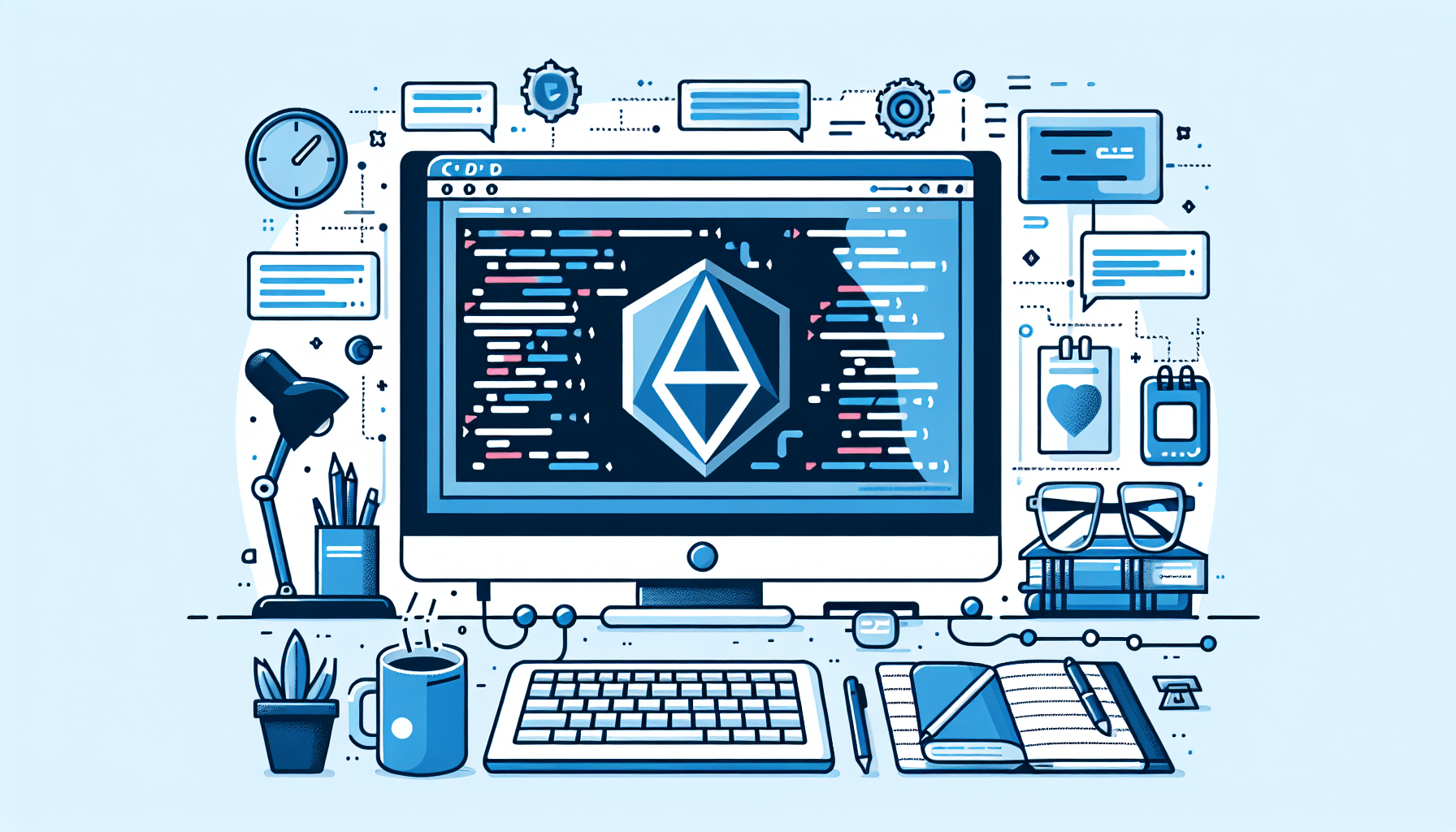From AngularJS 1.4 to Angular 9: Migration or Big Bang Rewrite? Let’s Dive In!

Hey there, curious coder! Ready to sort out the age-old query: do you have to migrate your AngularJS 1.4 app to Angular 9, or go for a giant bang rewrite? Let’s break it down like we’enhancement over an espresso.
AngularJS 1.4 to Angular 9 (The Great Migration Debate): To Move or to Rewrite?
Well, strap in, because it’s not just about sipping that frothy coffee delight and making a snap decision. This digital conundrum is akin to choosing between renovating a charming yet creaky old house or bulldozing the lot to erect a swanky new pad.
On one hand, migrating from AngularJS 1.4 to Angular 9 promises a smoother journey with familiar scenery, albeit with some necessary detours and roadworks.
On the other, opting for a full-on rewrite is like charting unknown territories with a shiny new map, potentially fraught with hidden pitfalls but also brimming with modern architecture and design bliss.
So, you’ve bought that AngularJS 1.4 app, and it’s served you nicely. But, if you’re eyeing Angular 9, prefer it’s the shiny new bike on the block. What’s the play right here? Migrate steadily or go all-in with a rewrite? 🤔
Migration: The Slow and Steady Approach

Migration might seem like the tortoise in the race, but it’s a strategy that can pay off in the long run. By taking it step by step, you can ensure that each piece of your application is smoothly transitioned, tested, and optimized before moving on to the next.
This method reduces the risk of service interruptions and allows your team to adapt to the new environment at a manageable pace. Plus, it gives you the flexibility to prioritize which features get the Angular 9 treatment first, based on user demand or business needs.
Imagine migration as a highway journey. You’re cruising along, taking pit stops, and enjoying the scenery. You update your app step by step, keeping things running smoothly while gradually incorporating Angular 9 features. It’s like replacing parts of your car while still driving it!
Big Bang Rewrite: The Fresh Start
But then, you hit a fork in the road. On one side, the path of continued incremental updates stretches out, dotted with the promise of stability and familiarity. On the other, the allure of a full-on rewrite with Angular 9 beckons, offering the sleekness of a brand-new engine and the thrill of cutting-edge features.
It’s a pivotal moment, one that demands careful consideration of the trade-offs between the comfort of gradual improvement and the excitement of a fresh, modern overhaul. Picture this: you’ve let go of your old car and upgraded to a brand new one.
Building a fresh app from the ground up is like an exhilarating leap into the unknown. It’s risky, yet incredibly rewarding when executed successfully. However, you’ll need a solid plan and perhaps a few energy drinks to power through those long nights.

Migration vs. Rewrite: Let’s See Some Stats!
| Feature | Migration | Big Bang Rewrite |
|---|---|---|
| Time | Can be unfolded over time | Shorter, however riskier |
| Cost | Can be unfold over time | High preliminary funding |
| Risk | Lower, gradual modifications | Higher, full overhaul |
| Team Effort | Smaller, ongoing | Larger, concentrated |
Real-Life Example: The Gradual Transition of Netflix
Netflix’s approach to personalization is a testament to the power of AI in crafting individual user experiences. By analyzing vast amounts of data on user preferences, viewing habits, and even the time spent on pause or rewind, Netflix’s algorithms offer tailored recommendations that keep subscribers engaged.
This continuous refinement of user profiles allows the streaming giant to not only retain customers but also to create a more intimate connection with its audience, making each interaction with the platform feel uniquely personal.
Netflix once faced this challenge and opted for migration. They gradually transitioned their app, ensuring minimal disruption to millions of users. Smart move, right? Discover their journey here.
Tips for a Smooth Migration
Pro Tip: When undertaking a migration to enhance personalization, it’s crucial to maintain a clear focus on user experience. For businesses like Netflix, this meant implementing a phased rollout that allowed for continuous testing and refinement.
By doing so, they were able to monitor the impact on user behavior in real-time, adjusting algorithms and interfaces to better suit individual preferences.
This approach not only mitigates risks but also ensures that the personalization engine evolves in harmony with user expectations, fostering a more engaging and intuitive platform. Use the Angular Upgrade Guide for a step-by-step walkthrough. It’s like having a trusty GPS in your migration journey!
1: Review Your Code: After reviewing your code, the next step is to harness the rich streams of data at your disposal. By leveraging user interactions, feedback, and behavioral patterns, you can train your AI to deliver a truly personalized experience.
This data-driven approach not only sharpens the accuracy of your personalization efforts but also allows for a dynamic system that adapts in real-time to the ever-changing preferences of your audience.
With the right algorithms in place, your AI becomes a learning entity, continuously refining its understanding of each user, ensuring that every recommendation feels thoughtfully curated and relevant. Before starting, understand your current setup. Identify components that need updates.
2: Use ngUpgrade: Once you’ve identified the components requiring updates, it’s time to implement ngUpgrade, a tool designed to bridge the gap between AngularJS (the older version of Angular) and Angular (the newer version). This allows for a smoother transition by enabling both frameworks to coexist within the same application.
By utilizing ngUpgrade, you can incrementally upgrade your existing services and components, ensuring that AI personalization features continue to operate seamlessly as you transition to a more modern, efficient framework.
This step-by-step approach minimizes disruptions to the user experience while maintaining the integrity of personalized content delivery. This software lets AngularJS and Angular elements coexist. It’s like having two besties working collectively!
3: Test, Test, Test: Before rolling out any AI-driven personalization features, it’s critical to put them through rigorous testing. This isn’t just about checking for bugs or glitches; it’s about ensuring that the personalization algorithms are truly enhancing the user experience.
By analyzing user interactions and feedback, developers can fine-tune the AI to deliver more accurate and relevant content, making sure that the personalization feels natural and not intrusive.
Only through thorough testing can we trust the system to operate smoothly and live up to the promise of a truly personalized online journey. Did we point out testing? Ensure each step is bug-free earlier than shifting on.
The Big Bang Club: When to Rewrite
In the realm of AI personalization, the concept of ‘The Big Bang Club’ refers to the pivotal moment when a system overhaul becomes necessary. This isn’t a decision to take lightly; it’s the digital equivalent of a heart transplant.
Before committing to such a drastic move, it’s crucial to weigh the existing infrastructure’s adaptability, the potential for incremental improvements, and the long-term benefits of starting anew.
Only when the scales tip decidedly in favor of a rewrite should we join the club and embrace the explosive transformation that comes with it. If your app’s code looks like a tangled mess (no shame, it happens!), a rewrite might be your best option. It’s a chance to rethink the structure, apply best practices, and emerge stronger.
Poll Time! 📊
Would you moderately:
- A) Migrate steadily, like Netflix
- B) Go for a giant bang rewrite
[Cast Your Vote!]

FAQs
Q: How lengthy does a migration sometimes take?
A: The duration of a migration can vary widely depending on the size and complexity of the systems involved. For a large enterprise, it could take months or even years to fully transition to a new platform. Smaller businesses might be able to migrate more quickly, but they still need to plan carefully to avoid disruption.
Regardless of the timeline, it’s essential to maintain a focus on quality and testing throughout the process to ensure a smooth transition for users and stakeholders. It varies; however, count on many months to a year, relying on the app measurement.
Q: Is a giant Bang rewrite costlier?
A: Certainly, a ‘Big Bang’ rewrite can be more expensive both in terms of direct costs and potential risks. This approach involves completely overhauling the system at once, which can lead to significant downtime and the possibility of unforeseen issues that could disrupt user experience.
Moreover, the cost isn’t just financial; there’s also the investment of time and resources to consider, as well as the potential loss of productivity during the transition period.
Organizations must weigh these factors carefully against the benefits of a fully updated and personalized AI system when deciding on their development strategy. Generally, sure. The upfront value is greater; however, it could repay in lowered upkeep prices.
Q: Can I simply keep on AngularJS 1.4?
A: Certainly, continuing with AngularJS 1.4 might seem like a cost-effective option in the short term, especially for legacy systems that are already well-integrated with this version. However, this decision could lead to potential challenges down the line, such as security vulnerabilities and a lack of compatibility with modern libraries and frameworks.
Moreover, as the tech community moves forward, the pool of developers familiar with older versions like AngularJS 1.4 is shrinking, making maintenance and updates more difficult and potentially more expensive over time. You can, however, remember that help and updates are restricted, which may lead to safety dangers.
Final Thoughts
Given these considerations, it’s clear that while AngularJS 1.4 may have served its purpose admirably in the past, the march of technology waits for no one. Organizations relying on this outdated framework should seriously consider the risks and costs associated with sticking to a legacy system.
Upgrading to a more current version of Angular or even a different modern framework could offer enhanced security, better performance, and improved developer productivity, ensuring that applications remain robust and competitive in the fast-evolving digital landscape.
Choosing between migration and a giant bang rewrite isn’t nearly know-how; it’s about what suits your workforce, finances, and timeline. Remember, there’s no one-size-fits-all reply.
Trusty Resources
When considering the path forward, it’s crucial to conduct a thorough analysis of your current system’s strengths and limitations. This will enable you to identify the key functionalities that must be preserved and the areas where improvements are necessary.
Furthermore, engaging with stakeholders and end-users can provide invaluable insights into what features are most desired, ensuring that any technological upgrade enhances the user experience rather than complicating it. For extra insights, discover these sources:
Incorporating AI personalization into a platform requires a delicate balance between automation and human touch. By leveraging machine learning algorithms, systems can learn from user interactions to deliver more relevant and tailored experiences. However, it’s crucial to maintain a level of user control to avoid the sense of loss of privacy or agency.
Establishing clear privacy policies and providing options for users to manage their personalization preferences can help in maintaining trust and ensuring that AI serves as a helpful assistant rather than an overbearing presence.
Let’s make your transition to Angular 9 as easy as possible! Keep coding, continue to grow, and will your apps be bug-free? 🐞✨




0oxzhq
obviously like your website but you have to check the spelling on several of your posts. Many of them are rife with spelling problems and I find it very bothersome to tell the reality however I will surely come again again.
I simply desired to say thanks yet again. I do not know the things I might have implemented in the absence of the points documented by you over such problem. It had been an absolute distressing setting for me personally, nevertheless looking at the skilled mode you dealt with that took me to jump with gladness. I will be grateful for the information and thus wish you recognize what a great job you’re getting into educating many others thru your web blog. More than likely you haven’t come across all of us.
g6jtcb
aqtes2
v4axqw